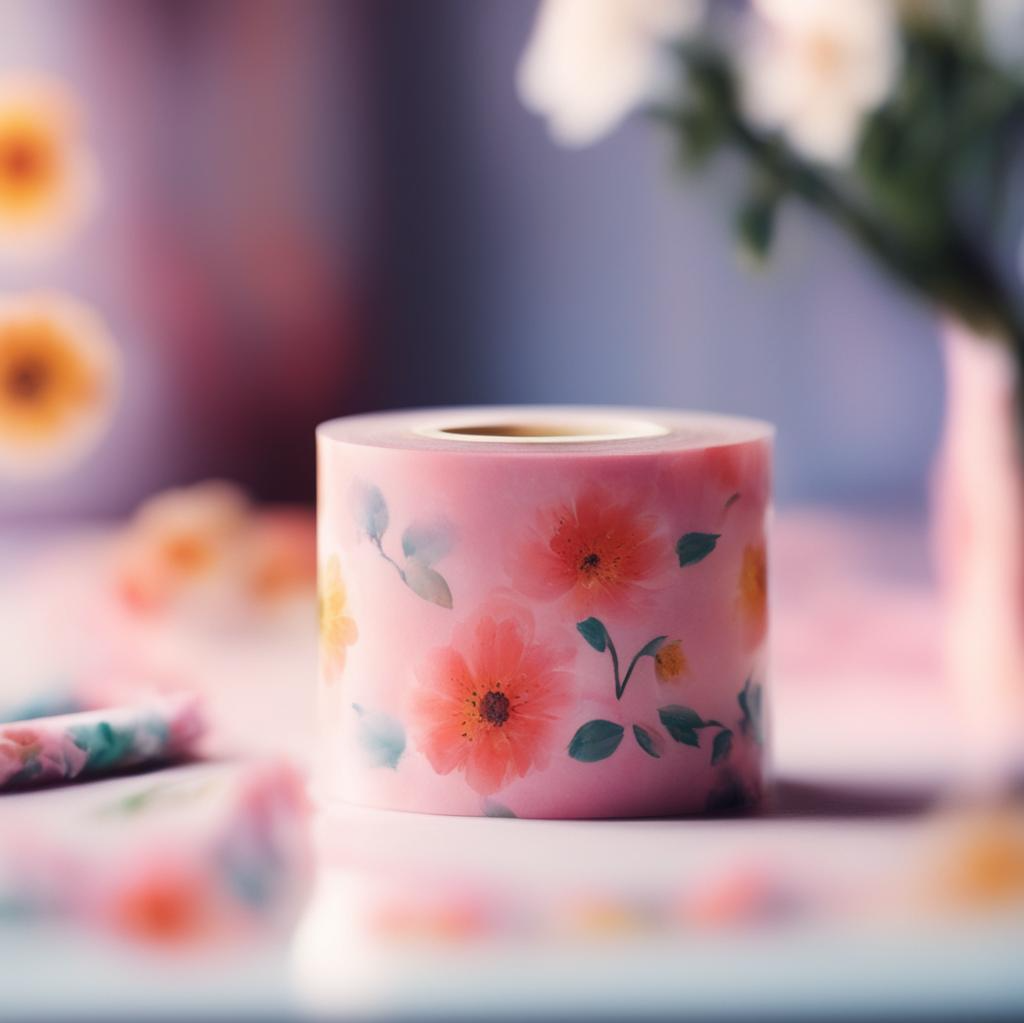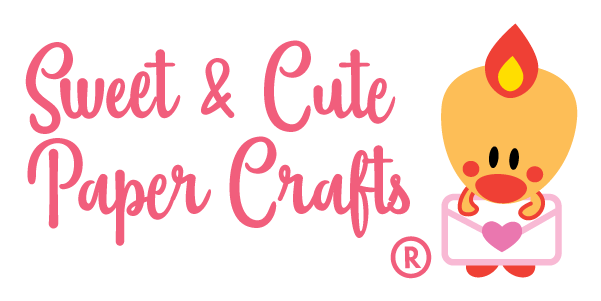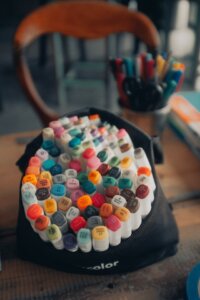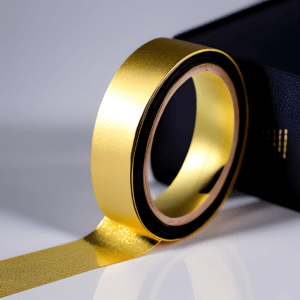Are you wondering — is washi tape removable? It’s a great material for crafting, thanks to washi tape’s colorful designs and convenience. And it’s important to find out whether you can take it off easily if you plan to use it to decorate walls or furniture surfaces.
I’m a washi collector and have used it on tons of different surfaces and projects. In this article, I’ll try to answer all your questions. Let’s jump right in!
TL:DR: Safest washi tape for use on any surface:
The super-popular authentic Japanese MT Washi Tape is my favorite washi tape for use on any surface. It’s super-easy to remove and reposition with no harm to any project.
Washi tape overview
Washi tape is a type of decorative tape that originated from Japan.
It is made from traditional Japanese paper, known as Washi, which is known for its durability and natural beauty.
The paper is made from natural fibers like bamboo, rice, or hemp.
This gives washi tape its unique texture, translucence, and durability.
Washi is often printed with colorful and whimsical designs.
So it’s great for creative projects such as scrapbooking, bullet journaling, and gift wrapping.
Plus, it’s a popular choice for adding a pop of color or pattern to a variety of surfaces.
Including paper, walls, furniture, and more.
Is washi tape removable?

The short answer is yes!
Unlike other adhesive tapes, washi tape is designed to be easily removable from most surfaces without leaving any trace, permanent marks, damage, or residue.
This is because it has a low tack adhesive that is specifically formulated for being taken off with no hassle.
So it’s a convenient and worry-free choice for a wide range of crafting projects.
However, there are a few exceptions to its ability to be removed, which I’ll go over below.
Another great feature of washi tape is its repositionability.
You can easily take it off and reapply it multiple times without the tape losing too much adhesive quality.
That’s why it’s an ideal material for use in projects where you need to make adjustments.
Can you take washi tape off from these surfaces?
Paper
Washi tape is especially popular for use in paper-based crafts.
For example, scrapbooking and bullet journaling.
It’s a great choice for these projects because you can easily remove it from paper surfaces without tearing paper.
The repositionability of washi tape is especially great for journals and scrapbooks, where you might need to make corrections to your layout.
Walls
Washi tape is a great way to add a modern touch to your home on a budget.
It’s so easy to apply and remove from most types of walls, even if they’re painted or covered with wallpaper.
Not only is it stylish, but it’s also super-practical.
You can even wipe walls with washi with a damp cloth if needed.
So this material is perfect for renters or anyone who wants to create temporary wall decor.
Wooden surfaces
Washi tape can also be used on wood surfaces, such as wooden picture frames, boxes, or furniture.
You can easily take it off them, including even painted or lacquered wood.
So this is a versatile material for home decor projects.
Try applying it to add a pop of color or pattern to your wooden crafts, cutting boards, doors, or cupboards.
Glass surfaces
Washi tape sticks great onto glass surfaces as well.
For example, on vases, mirrors, or picture frames.
It’s super-easy to take off, leaves no sticky residue, and doesn’t damage glass.
Try it for things like holiday window decor.
If you want to change the look or remove the tape after a while, it will come off cleanly.
Just keep in mind that washi tape is not waterproof or dishwasher safe.
So it won’t stay on drinking glasses or cups for too long with heavy use.
Plastic surfaces
You can make your space more organized and pretty by using washi tape to label or add color to any plastic surfaces.
For example, storage containers, plastic toys, or household items.
It won’t leave any permanent marks or peel paint.
Metal surfaces
Washi tape is great for decorating metal surfaces as well, such as metal picture frames or kitchenware.
You can spice up your metal items with unique designs!
It won’t peel away any metal coating or enamel when removed.
Again, while washi can be wiped with a damp cloth, avoid washing items like metal kitchenware with the tape on, or placing them in the dishwasher.
What surfaces is washi tape not removable from?
Washi tape is a great way to add a splash of color or texture without any long-term commitment.
It’s never permanent and can be removed from almost any surface without a trace.
Just keep in mind that there are a few delicate surfaces on which it’s not recommended to use this tape as it can cause a bit of damage:
Avoid using washi tape on gypsum or newly painted walls.
Washi is generally removable from most wall surfaces, including kitchen tiles, wallpaper, paint, etc.
However, don’t use it on delicate gypsum walls, as it can potentially peel paint.
For the same reason, don’t apply washi tape to newly painted walls before the paint fully dries and hardens.
The adhesive on the tape can stick to wet paint and cause damage when removed, which could ruin the paint job.
Always read the instructions on the paint can for the recommended drying times (usually a few days).
So you can be sure that the adhesive won’t disrupt the painted surface.
Avoid using washi tape on tissue paper.
Washi tape is a great choice for most papers, since its adhesive is low tack and easily removable.
It’s perfect for adding a little extra flair to your everyday documents, like envelopes, letters, and even photos.
But be careful when using it with tissue paper.
This type of paper is too thin and delicate and your tape may tear it when you take it off.
If you do choose to use washi tape with tissue paper, start by applying a very small amount. And only press it down lightly.
Precautions
Always test your washi tape before using it on delicate surfaces
To be sure that your surface is completely safe, it is highly recommended to test your washi tape on an inconspicuous area first. This will give you complete peace of mind that no marks or damage are left behind once you remove it.
This way, you’ll know that your washi tape is safe to use.
Simply stick the tape on, then peel it off the test area.
If all looks good, you’re ready to go ahead with using it on your project.
Be careful when removing washi tape after leaving it on a painted surface for too long.
If the tape is left on for too long, the adhesive may become stickier and damage the paint when removed.
So it’s always best to remove it slowly and carefully.
Whenever possible, check on the tape from time to time.
If any residue remains after removal, give the surface a good clean.
Keep washi tape or the item or surface decorated with it away from heat, moisture, or direct sunlight
For a long-lasting and surface-friendly tape decoration, avoid exposing it to heat, moisture, extreme temperatures, or direct sunlight.
This is because environmental factors can change the chemical composition of the adhesive.
That can make it difficult to remove washi with no residue.
Always store your tape and items or surfaces decorated with it in a cool, dry place and away from UV rays.
Plus, keep it away from heat sources, like radiators, heaters, etc.
What is more removable — washi tape or masking tape?
Washi tape and masking tape are two great products that are often used in crafting and DIY projects.
While they may appear similar, they do have some differences.
Washi tape is the ideal choice for projects where you need to be able to remove and reposition it easily.
The main difference between washi tape and masking tape is their adhesive.
Masking tape usually has a stronger adhesive than washi.
This makes it more difficult to remove this tape.
So it can potentially leave residue behind or even slightly damage the surface it was applied to.
In contrast, washi tape has a low tack adhesive that makes it easy to remove with no residue or damage.
Another difference between the two tapes is the texture.
Washi tape is made from Japanese rice paper, which gives it a smooth, matte texture that is easy to write on and that looks prettier.
Masking tape, on the other hand, has a rougher texture. It’s difficult to write on and is not as visually appealing.
How to remove washi tape?
While washi tape is known for being easily removable, there still may be cases when you need some effort to take it off.
Here are some tips and tricks:
- Remove it by peeling it off gently at a 45-degree angle.
- If it’s difficult to get a corner or edge to lift, you can use a plastic scraper or a credit card to make it easier.
- Then, take your time and slowly pull the tape away with your fingers.
- If the tape has been on the surface for a while and is not budging, try using a hair dryer on low heat to warm up and loosen the adhesive.
- If there’s some residue left, try using a rubber eraser or adhesive removers like Goo Gone, or rubbing alcohol.
- Just make sure to test these products on a small, hidden area first to make sure they won’t damage the surface.
Washi tape is a great removable and repositionable material that can be used for a variety of projects.
Its low adhesive property makes it the ideal choice for paper crafts, home decoration projects, and other situations where you require a tape that can be easily and seamlessly taken off and reapplied.
To fully appreciate the incredible advantages of washi tape, make sure to avoid gypsum walls and test it on delicate surfaces beforehand.







